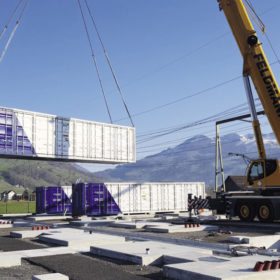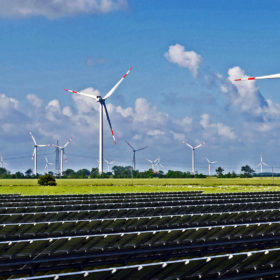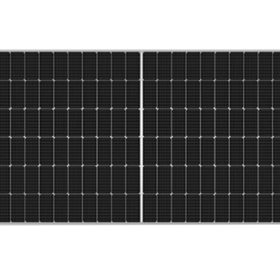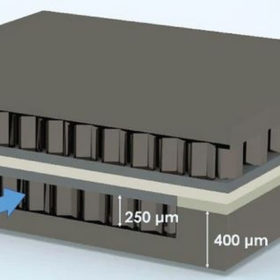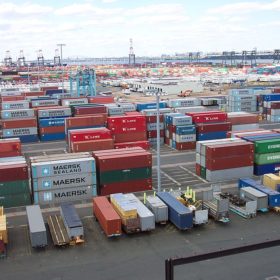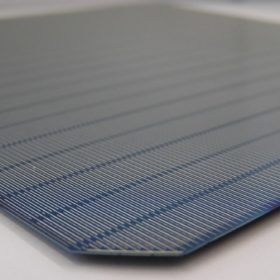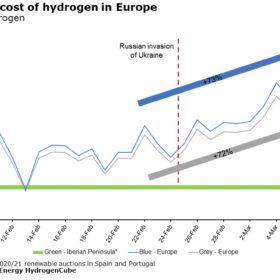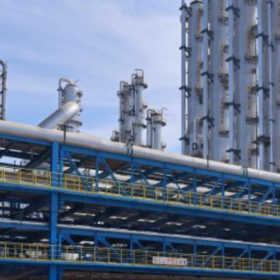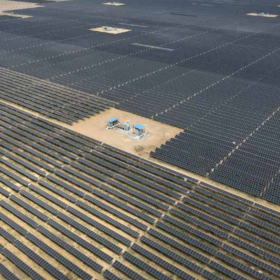Battery supply could remain tight into next year
Analyst Wood Mackenzie has predicted soaring demand for electric vehicle devices will ensure supply will not keep pace with demand until some point in 2023.
Solar power generation for EV charging far more land-efficient than cultivation for ethanol blending
A new report by IEEFA proposes enhancing India’s electric vehicle (EV) adoption strategy as an alternative to further promotion of blended fuel, given the land-use efficiency gap between renewable energy generation for EV charging and cultivation for ethanol blending in fuels. Matching the distance driven by electric vehicles (EVs) charged from one hectare of solar generation would require ethanol derived from up to 251 hectares of sugar cane or 187 hectares of maize, it estimated.
ArcelorMittal, Greenko partner on a renewables-plus-storage project
UK-headquartered ArcelorMittal will own and fund a hybrid wind-solar project with energy storage for round-the-clock RE supply to the Hazira plant of its joint venture ArcelorMittal Nippon Steel India. Greenko will design, construct and operate the project.
Gautam Solar unveils 566W bifacial module
The G-2X Mono series solar modules boast a reported front and back power conversion efficiency of up to 25.72%.
Monolithic fuel cell with power density of 5.6kW/L
An international research group has developed a solid oxide fuel cell that may be used in vehicles. The monolith device has an active cell area of around 18 cm2 and was built through common manufacturing processes. It was found to achieve a high power density of 5.6 kW/L, which the scientists said is comparable with that of the best performing fuel cells based on ceramic anodes.
Tesla opens gigafactory in Germany
The first Model Y electric cars have rolled off the assembly line at the US electric car manufacturer’s first European factory.
Commercial and industrial sector alone could drive 75GW of renewables addition by 2030
Ratings agency ICRA says commercial and industrial consumers in India will drive an incremental renewable energy capacity addition of at least 75GW by 2030—assuming they meet 20% of their energy demand through renewables.
China and Hong Kong are India’s biggest lithium battery suppliers
The two nations together supply 96% of India’s lithium-ion cell and battery imports and almost 70% of non-rechargeable lithium products.
POLO-IBC solar cell with 23.7% efficiency
Scientists in Germany have developed two kinds of solar cells based on n-type doped electron-collecting poly-Si on oxide (POLO) junctions with aluminum-alloyed p+ contacts. Both devices are claimed to be possible upgrades of PERC technologies. The best-performant cell is an IBC device showing a power conversion efficiency of 23.71%, an open-circuit voltage of 711.5mV, a short-circuit current of 41.3mA/cm2, and a fill factor of 80.9%.
Invasion of Ukraine an inadvertent boost for green hydrogen
Rystad Energy has joined BloombergNEF with a significant forecast for gray and blue hydrogen off the back of Russia’s invasion of Ukraine. According to the analysts, the impact of the war has sent prices of fossil fuel-tied forms of hydrogen production surging, leaving the gradual but consistent downward price trend of green hydrogen now looking remarkably competitive.
